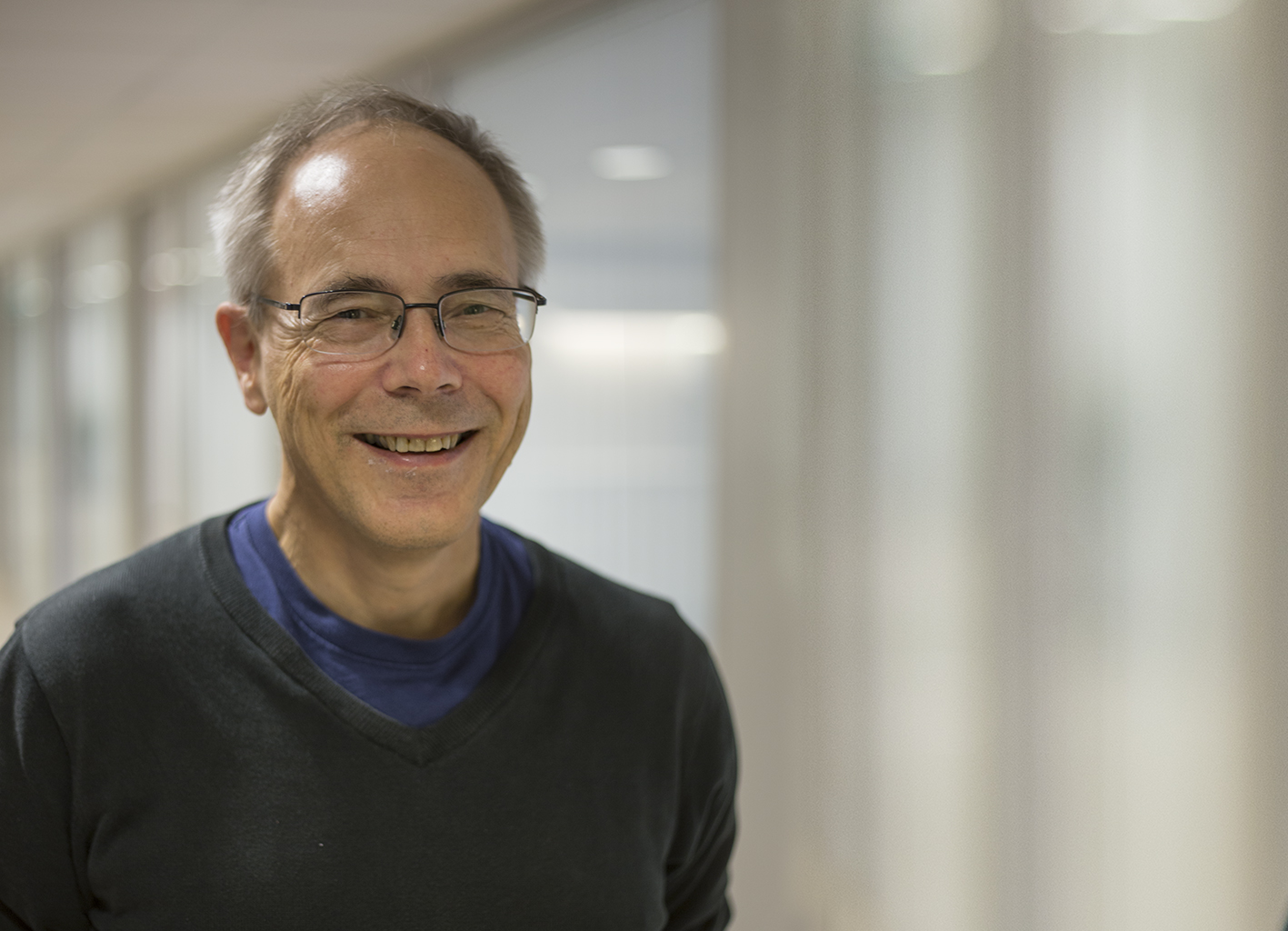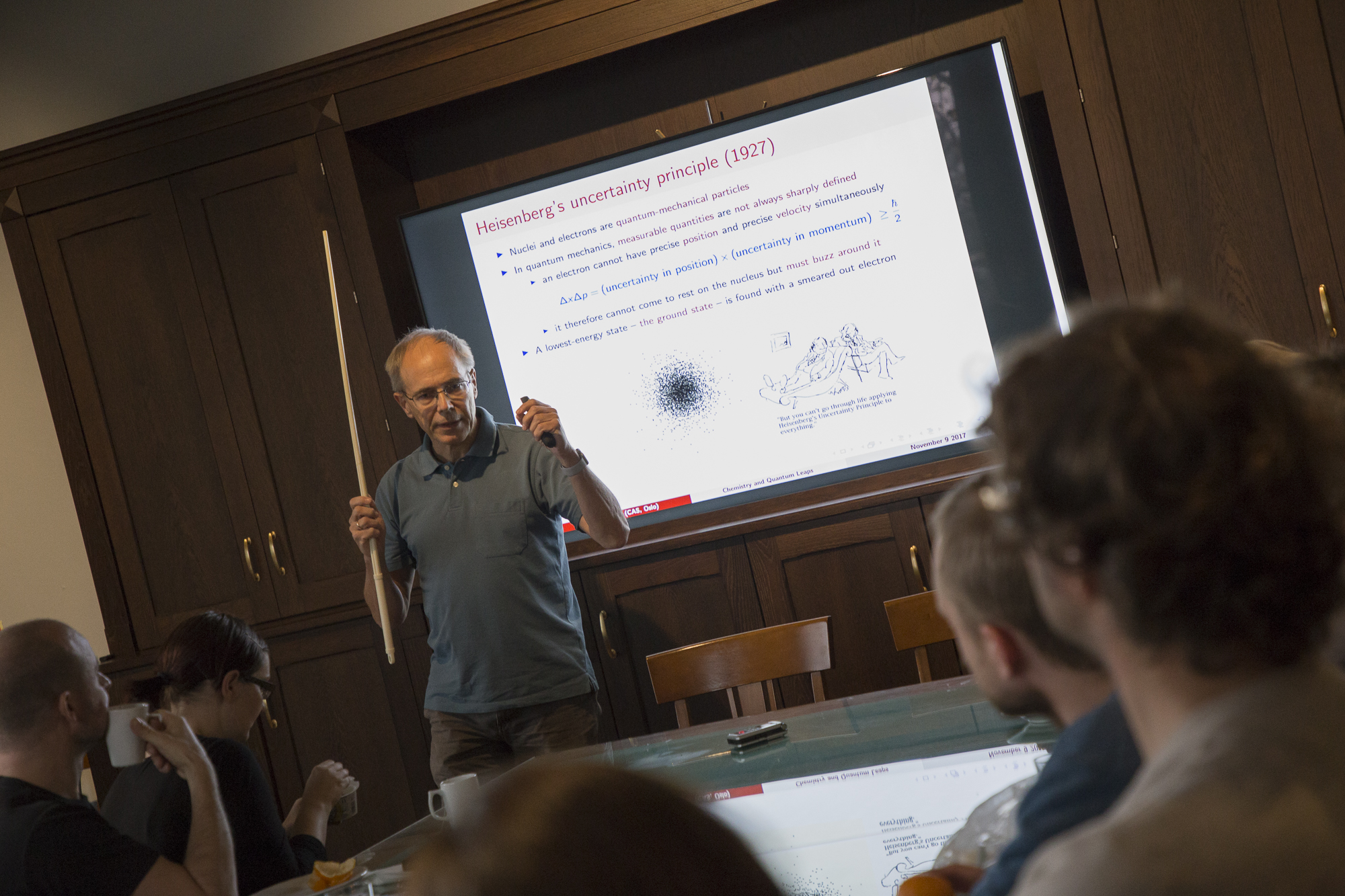Alumni Spotlight: Trygve Helgaker

The professor of theoretical chemistry at the University of Oslo (UiO) is returning to CAS this autumn to participate in the project Attosecond Quantum Dynamics Beyond the Born-Oppenheimer Approximation, led by Thomas Bondo Pedersen and Simen Kvaal.
The project will attempt to model how molecules behave when they are perturbed or disturbed by ultrashort laser pulses. Helgaker will contribute to the project by introducing ‘more chaos,’ as he puts it himself, in the form of a magnetic field, and then study how magnetic fields and laser pulses work together.
The last time Helgaker was at CAS during the 2017/2018 academic year, he led the project Molecules in Extreme Environments, which explored what happens to molecules in strong magnetic fields – conditions that can only be found light-years away from Earth. During the same year, Helgaker led the Centre for Theoretical and Computational Chemistry (CTCC), a Centre of Excellence that closed in October 2017, and then the Hylleraas Centre, which opened in the same month.
We spoke with the professor about his work on chemistry under extreme conditions and his return to CAS to find out more.
- Read also: Research in Review: 'Molecules in Extreme Environments'
- Read also: Meet the Group Leaders: Trygve Ulf Helgaker
What makes you want to come to CAS for a second time this autumn to join the project Attosecond Quantum Dynamics Beyond the Born-Oppenheimer Approximation?
I remember my last day at CAS in 2018, on the last Friday in June. I was the last to leave CAS that day and hesitated to drop my keys irretrievably into the box — even though I was heading for a beer with the remaining fellows on a warm summer day. I knew I wanted to come back for the unique combination of science and camaraderie that CAS offers.
With the attosecond project led by Thomas Bondo Pedersen and Simen Kvaal, this is already happening. It is an exciting project, and I am eager to learn about attosecond chemistry and its quantum mechanical description — and I hope to contribute with my own expertise.
The project is highly interdisciplinary and will investigate and develop theoretical and computational tools to plan, understand and predict experiments probing the quantum dynamics of molecular systems at the attosecond timescale. Why is this interesting to study, and what perspectives will you bring to the project?
UItrashort laser pulses give us new ways to probe and manipulate atoms and molecules at resolutions that were unthinkable just a few years ago. To understand how such pulses affect the molecules and their electrons, to interpret experiments made possible by new light sources, and to enable new discoveries, accurate modelling is needed, but today's methods are not sufficient.
This is the challenging but rewarding endeavour of the attosecond CAS project: to model how molecules behave when they are perturbed, disturbed or even torn to pieces by ultrashort laser pulses.
My contribution is to bring even more chaos to the table by introducing a magnetic field. Strange things happen in strong magnetic fields, which is what we studied at CAS in 2017/2018. I am curious to see how magnetic fields and laser pulses will work together. I imagine that, somewhere in the universe, this is what happens to molecules.
During your stay at CAS in 2017/2018 you led a project aiming to understand chemistry under extreme conditions such as strong magnetic fields, extreme pressure, and intense laser pulses. What do you remember best from the year at CAS?
Scientifically, the modelling of pressure, which was new and educational to me. We did this when studying the melting of noble gases in a magnetic field, drawing on the combined expertise of the CAS fellows. We also gained a better understanding of what stabilises and destabilises molecules in strong magnetic fields — how a strong field acts sometimes as a bond breaker and sometimes a bond maker, generating molecules unknown to us on Earth.
Apart from the science, the two three-day workshops we held at CAS stand out. The first was held in January as a surprise celebration in honour of one of the CAS fellows — and we managed to keep it secret! The second workshop was held toward the end of the CAS project, and it was attended by experimentalists and theoreticians on chemistry in extreme environments. It was probably the first meeting of its kind.
Finally, I remember fondly the seminars, discussions, lunches, and students and postdocs working at the round table when we had more people than offices, the Abel Prize events, the Friday beer, our garden party at the Academy, and the restaurant visits. And that I were to be the last to leave out the window by rope in case of fire or some other ‘extreme event.’

You have since 2017 led the Hylleraas Centre for Quantum Molecular Sciences. In what way, if any, did the work and new collaborations during the year at CAS contribute to the work at the Centre?
The Hylleraas Centre opened just a few weeks after the CAS project, so my year at CAS coincided almost entirely with my first year as director. In fact, in the same year, I was also director of the Centre for Theoretical and Computational Chemistry, whose closing in October 2017 coincided with the opening of the Hylleraas Centre, making the first few months at CAS much busier than I had bargained for…
In any case, our CAS project corresponded to one of the six research themes of the Hylleraas Centre: chemistry in extreme environments. So the work that began at CAS was indeed the beginning of work that was carried forward at the Hylleraas Centre — much of it in collaboration with the previous CAS fellows. Nearly all the CAS fellows visited the Hylleraas Centre for one week in November 2019, when we completed some of the projects begun at the Centre.
At present, our work on extreme environments at the Hylleraas Centre concerns the dynamics of molecules in a strong magnetic field. This project, which was planned at CAS in the spring of 2018, has turned out to be hugely interesting, with several surprises along the way. The work involves collaboration with CAS fellow Wim Klopper from the Karlsruhe Institute of Technology, whose student visited us for five months in 2020.
Let me add that several fellows of the CAS project will host the conference ‘Chemistry at Extreme Conditions’ in New Zealand in 2024 — so the research in this field is carried forward in different ways.
What are you looking forward to when returning to CAS this autumn?
What I miss most from CAS are probably the open-ended seminars that we held regularly, often twice in a week. Nobody felt rushed, and there was nobody to interrupt us, creating a feeling of luxury.
And I miss the lunches, which surpassed what I had at work before and after.
- This interview was first published in our monthly newsletter. Sign up here.